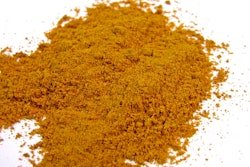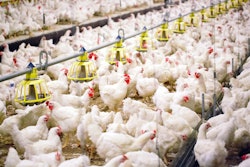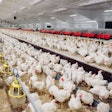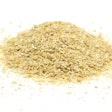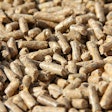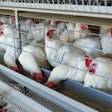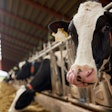
Coccidiosis is a highly contagious disease that affects poultry – especially those raised on floors – causing intestinal damage, reduced growth rates and increased mortality. In conventional poultry farming, coccidiostats have been used to prevent and control the disease. However, this practice has raised concerns for several reasons:
Antimicrobial resistance: Overreliance on coccidiostats is believed to contribute to the development of antimicrobial resistance, which potentially poses a threat to animal and human health.
Environmental impact: The use of coccidiostats can result in the excretion of these chemicals into the environment, leading to potential but hardly documented ecological consequences.
Consumer preferences: More consumers are seeking products from animals raised without antibiotics and/or synthetic chemicals, often confusing this with sustainability and climate change.
Given these challenges, modern poultry producers are exploring alternative strategies to manage and prevent coccidiosis while meeting consumer demands for healthier and more sustainable poultry products. In truth, we have yet to discover a true alternative to traditional coccidiostats, so a mix of methods and strategies is often employed. As one vet told me, zero coccidia is not possible; we just want them to cause little to no harm.
1. Probiotics and prebiotics
Probiotics are live beneficial bacteria that can improve gut health in poultry. They promote a balanced intestinal microbiota, making it more resistant to coccidia colonization. Prebiotics, on the other hand, are non-digestible compounds that promote the growth of beneficial gut bacteria. Their efficacy remains brand-specific, and care should be exercised in selecting the few that actually work the best.
2. Phytogenics
Many herbs and plant extracts have been studied for their potential anti-coccidial properties. These natural alternatives can be added to poultry feed to help prevent coccidiosis. They often have fewer side effects than synthetic coccidiostats and are well received by consumers seeking more natural poultry products. However, most of them have little to no effect.
3. Vaccination
Coccidiosis vaccines have been developed to stimulate the bird’s immune system, making it more resilient to coccidia infection. While the initial cost and complexity of administering vaccines can be a challenge, they offer long-term benefits by reducing reliance on chemical additives and minimizing antimicrobial resistance.
4. Genetic selection
Some poultry breeding programs are focused on developing bird strains that are more resistant to coccidiosis. Genetic selection aims to enhance the bird’s natural immunity to the parasite, reducing the need for coccidiostats. However, this remains a futuristic project that is not yet practical.
5. Biosecurity measures
Strict biosecurity protocols can help prevent the introduction and spread of coccidia on poultry farms. This includes measures such as limiting access to the farm, disinfecting equipment and implementing quarantine procedures for new birds. However, all such practices are already used or ignored, so nothing more is to be expected here.
6. Nutritional management
Proper nutrition may play a limited role in preventing coccidiosis. Formulating balanced diets that meet the specific nutritional needs of poultry can improve their overall health and resistance to the disease. However, this is already done for other purposes and cannot be the main way addressing coccidia.
We are still struggling to find true alternatives to traditional coccidiostats. At the moment, we recycle existing additives and tighten biosecurity and nutrition. At best, we can minimize damage from coccidia while we strive to find in-feed alternatives. In the meantime, vaccination seems to be working.


